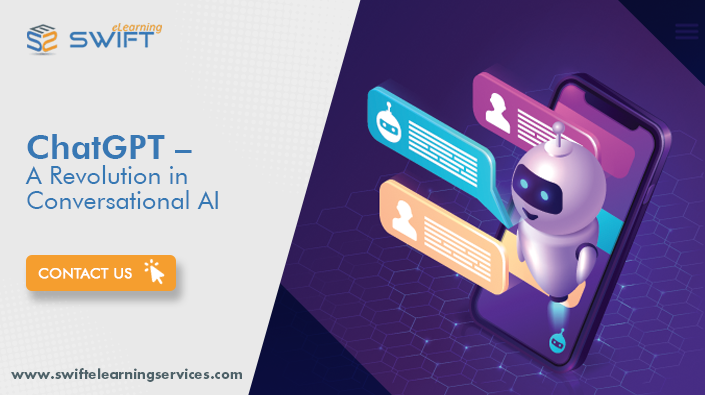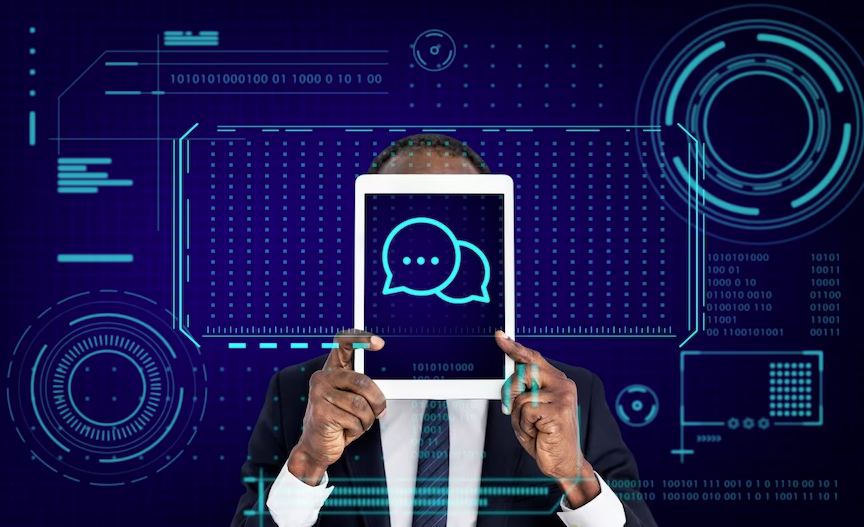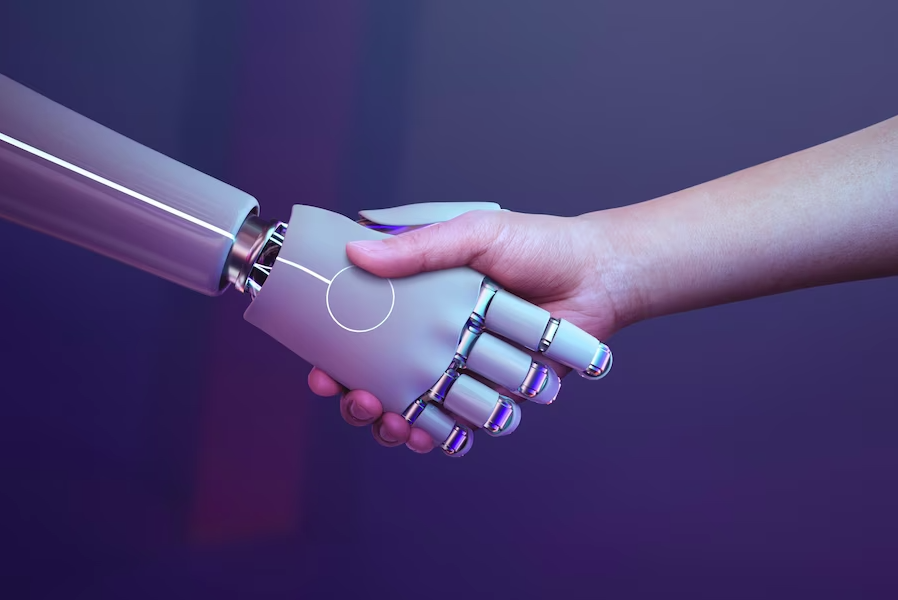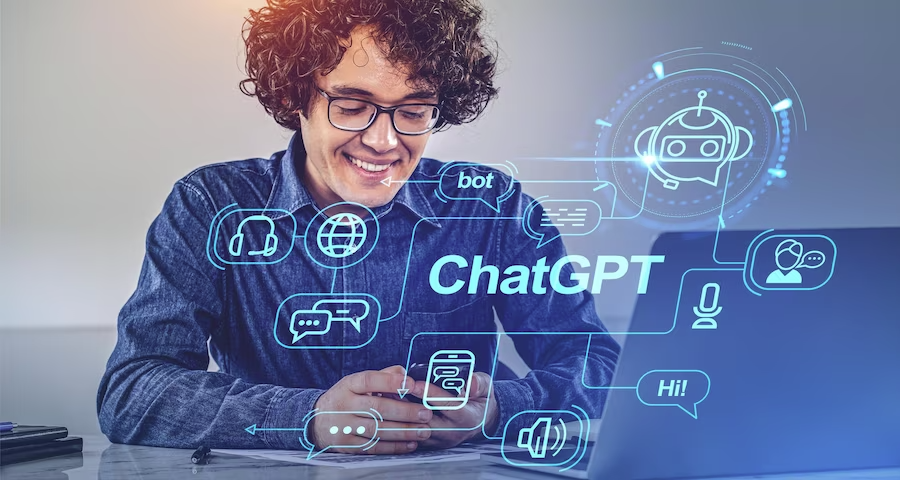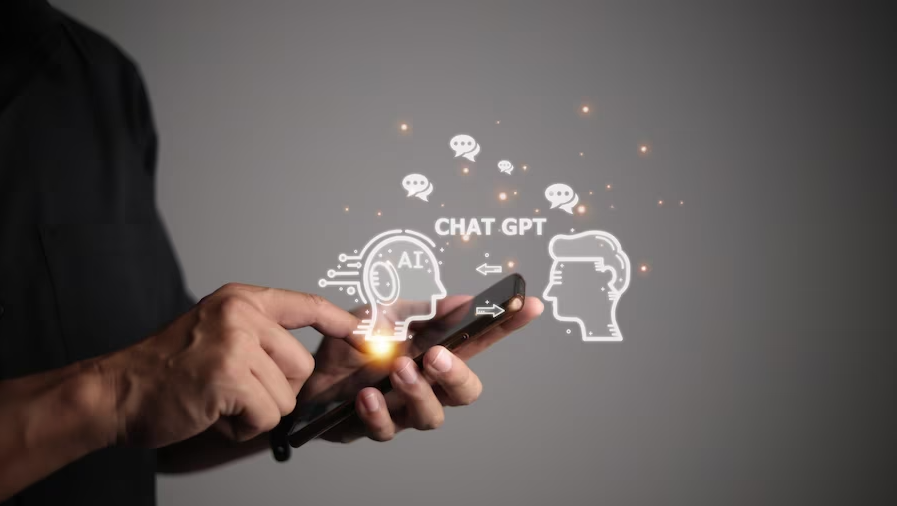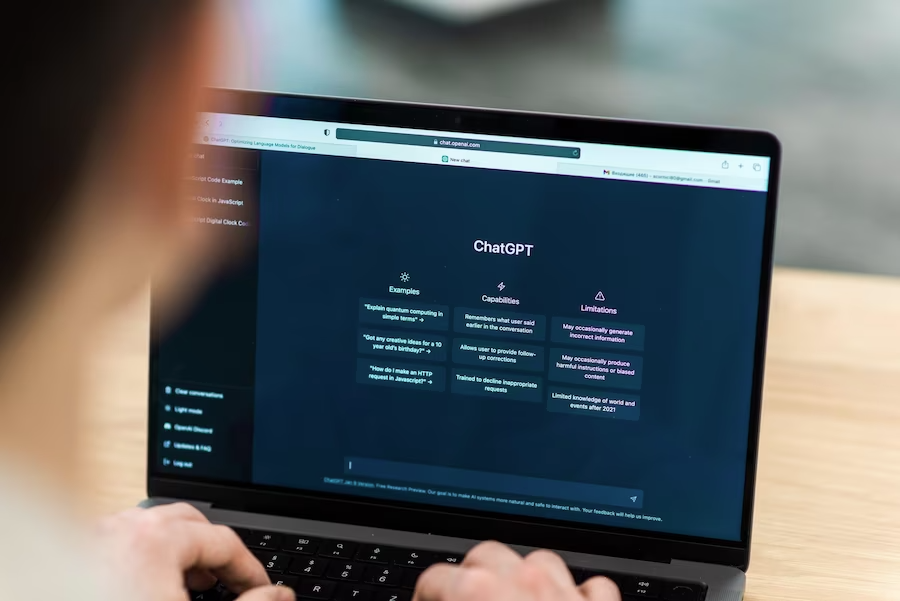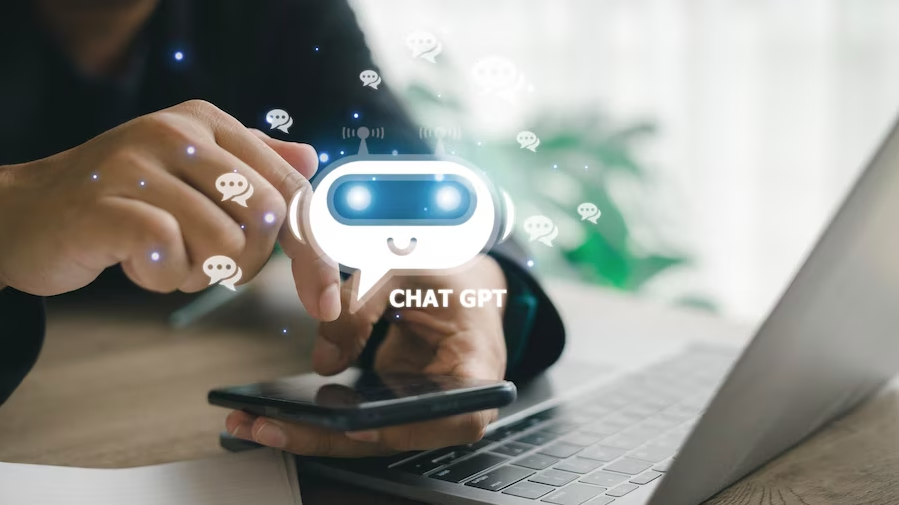OpenAI ChatGPT – A Revolution in Conversational AI
1. OpenAI ChatGPT – Introduction
Artificial Intelligence (AI) has revolutionized various aspects of our lives, and one of its remarkable applications is in natural language processing. OpenAI ChatGPT, powered by the state-of-the-art GPT-3.5 architecture, has emerged as a powerful tool for generating human-like text and engaging in dynamic conversations.
In this blog post, we will delve into the capabilities and implications of OpenAI ChatGPT, exploring its potential applications, limitations, and the impact it has on various industries.
2. Understanding OpenAI ChatGPT
OpenAI ChatGPT is an advanced language model that uses deep learning techniques to generate coherent and contextually relevant responses to user inputs.
Trained on an extensive dataset comprising diverse internet text, OpenAI ChatGPT has developed an impressive ability to understand and generate text across a wide range of topics. This versatility allows users to engage in natural, interactive conversations with the model, enabling a human-like conversational experience.
3. How good is OpenAI ChatGPT?
As an AI language model, OpenAI ChatGPT is designed to understand and generate human-like text in English. It has been trained on a diverse range of internet text and has the ability to assist with various tasks, provide information, generate creative content, and engage in conversation.
However, it’s important to note that its responses are generated based on patterns and examples in the training data, and it doesn’t possess real-time information or awareness of current events beyond its knowledge cutoff date. Overall, OpenAI ChatGPT aims to be a useful tool, but it’s always recommended to verify information from reliable sources.
Nevertheless, OpenAI continuously refines and updates their models to enhance their capabilities, address limitations, and incorporate user feedback.
4. How does OpenAI ChatGPT work?
OpenAI ChatGPT is based on a deep learning architecture known as the Transformer model, specifically the GPT (Generative Pre-trained Transformer) architecture. It utilizes a combination of unsupervised pre-training and supervised fine-tuning to generate text responses.
Here’s a simplified overview of about ChatGPT works.
4.1 Pre-training
Initially, the model is trained on a large corpus of publicly available text from the internet. It learns to predict the next word in a sentence based on the previous words, capturing patterns, grammar, and contextual information.
4.2 Architecture
ChatGPT employs a transformer-based architecture. Transformers utilize self-attention mechanisms, allowing the model to weigh the importance of different words and their relationships in a sentence. This architecture enables the model to handle long-range dependencies and generate coherent responses.
4.3 Fine-tuning
After pre-training, the model is fine-tuned using a narrower dataset generated with the help of human reviewers. These reviewers follow specific guidelines provided by OpenAI to review and rate potential model outputs for a variety of example inputs. The model learns from this feedback to refine its responses.
4.4 Prompting and Generation
To start a conversation, users provide an initial message or prompt. The model takes in the prompt and generates a response based on the learned patterns from pre-training and fine-tuning. It considers the context of the conversation, including previous messages, to generate more relevant and coherent replies.
4.5 Iterative Feedback
OpenAI encourages users to provide feedback on problematic model outputs through their user interface. This feedback helps OpenAI in refining and improving the model over time.
5. How to use OpenAI ChatGPT?
Contrary to the negative notions users have related to ChatGPT usage, it is quite simple and user-friendly.
Follow these steps to use OpenAI ChatGPT effectively:
5.1 Formulate your question/statement
Prepare the text you want to input to the model. Ensure your input is clear and specific to get a relevant response.
5.2 Send your request
Submit your text as a message to the ChatGPT model. You can use the OpenAI API or an interface that integrates with the model, such as the OpenAI Playground.
5.3 Receive the response
The model will process your input and generate a response based on the information it has been trained on. The response will be returned to you as text.
5.4 Continue the conversation
If you have additional questions or to continue the conversation, you can send a new message as a follow-up. The model will consider the conversation history when generating the response.
5.5 Provide context
It can be helpful to provide some context or reference to previous messages if your question relates to a specific topic mentioned earlier in the conversation. This helps the model better understand and provide more accurate responses.
5.6 Experiment and iterate
If you’re not satisfied with the initial response, you can experiment with rephrasing your input or providing more specific instructions to guide the model. Feel free to iterate and refine your questions to get the desired output.
5.7 Be aware of limitations
Although ChatGPT is a powerful language model, it may sometimes produce incorrect responses. It’s important to critically evaluate the generated output and not treat it as a definitive source of information.
6. Applications of OpenAI ChatGPT
ChatGPT has several applications across various domains. Here are a few examples:
6.1 Customer Support
OpenAI’s ChatGPT can be used to provide automated customer support, answering common questions and resolving issues. It can handle basic inquiries, provide product information, or assist with troubleshooting.
6.2 Content Generation
OpenAI ChatGPT can assist in generating content for blogs, articles, or social media posts. It can help with brainstorming ideas, creating outlines, or providing suggestions for creative writing.
6.3 Personalized Recommendations
By understanding user preferences and historical data, ChatGPT can provide personalized recommendations for products, movies, books, or other items based on individual preferences and interests.
6.4 Language Translation
OpenAI ChatGPT can be utilized for language translation, enabling users to interact in their native language while receiving responses in their preferred language.
6.5 Tutoring and Education
ChatGPT can act as a virtual tutor, helping students with doubts, explaining concepts, and providing additional learning resources.
6.6 Information Retrieval
OpenAI ChatGPT can assist in retrieving information from a vast knowledge base. Users can ask questions and receive relevant answers or summaries from a wide range of topics.
6.7 Virtual Assistants
OpenAI ChatGPT can be integrated into virtual assistants or chatbots, allowing users to interact naturally and receive assistance with tasks like scheduling appointments, setting reminders, or retrieving information.
6.8 Gaming and Interactive Storytelling
ChatGPT can be used to create interactive narratives or game characters that respond to player inputs, enhancing the gaming experience.
7. Advantages of OpenAI ChatGPT
OpenAI ChatGPT offers several advantages that make it a valuable tool for various applications:
7.1 Enhanced User Experience
OpenAI ChatGPT has been trained on a massive amount of text data, allowing it to understand and respond to natural language input. Users can interact with it in a conversational manner, making the interaction more intuitive and user-friendly.
7.2 Versatility
OpenAI ChatGPT is a flexible model that can handle a wide range of topics and tasks. It can provide information, answer questions, offer suggestions, or engage in creative writing. Its versatility enables it to be applied across different domains and use cases.
7.3 Adaptability
OpenAI ChatGPT can be fine-tuned and updated with new data to improve its performance or adapt it to specific tasks. This allows the model to evolve and learn from user interactions, leading to potential enhancements in its responses over time.
7.4 Scalability
As a language model, OpenAI ChatGPT can handle multiple conversations simultaneously and accommodate a large number of users. This scalability makes it suitable for applications that require handling a high volume of interactions, such as customer support systems.
7.5 Available 24/7
OpenAI ChatGPT can be deployed as an automated system that is accessible round the clock. This means users can engage with it and receive responses at any time, providing a convenient and readily available source of information or assistance.
7.6 Reduction of Human Workload
By automating certain tasks and providing instant responses, ChatGPT can help reduce the workload on human operators. It can handle routine inquiries, provide initial support, or assist with information retrieval, freeing up human resources for more complex or specialized tasks.
7.7 Consistency
OpenAI ChatGPT delivers consistent responses based on the information it has been trained on. Unlike human operators who may have variations in knowledge or responses, ChatGPT provides a uniform experience, ensuring a consistent level of service and information delivery.
7.8 Multilingual Capabilities
OpenAI ChatGPT can process and generate text in multiple languages, making it useful for multilingual applications and interactions. It can assist users across different linguistic backgrounds, improving accessibility and inclusivity.
8. Limitations of OpenAI ChatGPT
ChatGPT, like any other language model, has several limitations. Here are some of them:
8.1 Lack of real-world understanding
OpenAI ChatGPT lacks real-world context and knowledge. It can generate responses based on patterns in its training data, but it doesn’t possess genuine comprehension of concepts or the ability to reason about the world.
8.2 Sensitivity to input phrasing
OpenAI ChatGPT is sensitive to the way a question or prompt is phrased. It may provide different responses to similar queries with slight rephrasing, which can lead to inconsistent or incorrect answers.
8.3 Inability to verify information
OpenAI ChatGPT doesn’t have the capability to verify the accuracy of the information it generates. It can generate plausible-sounding but may provide misleading answers, particularly when dealing with unverified topics.
8.4 Tendency to be verbose
OpenAI ChatGPT often produces excessively long and detailed responses, which can make it less efficient and less concise compared to a human response.
8.5 Difficulty with ambiguous queries
When faced with ambiguous queries or incomplete information, ChatGPT may guess the user’s intent rather than asking clarifying questions. This can lead to incorrect or irrelevant answers.
8.6 Lack of a consistent personality
Unlike human interlocutors who maintain a consistent personality and background throughout a conversation, ChatGPT may sometimes provide inconsistent responses or change its stance on a topic within the same conversation.
8.7 Potential for inappropriate or biased content
OpenAI ChatGPT can generate responses that may be biased, offensive, or inappropriate. Despite efforts to filter and moderate the model’s behavior, there is a risk of it producing content that violates ethical or social norms.
9. Ethical Considerations for OpenAI ChatGPT
As an AI language model, OpenAI ChatGPT has been designed with ethical considerations in mind. Here are some key points regarding ethical considerations:
9.1 Privacy and data security
OpenAI takes user privacy and data security seriously. While interacting with users, OpenAI ChatGPT does not store any personal data. However, OpenAI may collect and store anonymized user interactions for research and improvement purposes.
9.2 Bias and fairness
OpenAI is committed to addressing biases in AI systems. They strive to provide a fair and unbiased experience to users. However, since ChatGPT learns from large amounts of data from the internet, it may inadvertently reflect biases present in the training data.
9.3 Misuse and harmful content
OpenAI endeavors to prevent the use of ChatGPT for malicious purposes. They implement safety measures and rely on user feedback to improve the system’s behavior. If any harmful or inappropriate outputs are observed, Users can report them to OpenAI.
9.4 Accountability and user responsibility
Users should exercise caution and responsibility while interacting with OpenAI ChatGPT. It is crucial to remember that ChatGPT is an AI language model and may not always provide accurate or reliable information. Users should verify information from trusted sources and not solely rely on the model’s responses.
OpenAI continues to work on research and engineering to enhance the system’s capabilities while addressing ethical concerns. They value feedback from users and the wider community to improve the system’s behavior and ensure responsible AI usage.
10. Impact of OpenAI ChatGPT
ChatGPT, as a sophisticated language model from OpenAI, has had a transformative impact on various aspects of society and numerous domains. OpenAI ChatGPT has impacted various areas by revolutionizing communication, enhancing customer support, assisting with personal tasks, supporting content creation, facilitating language learning, aiding in research and knowledge exploration.
10.1 Industries that benefit from OpenAI ChatGPT
OpenAI ChatGPT can benefit various industries by providing intelligent conversational capabilities. Some of the industries that can benefit from OpenAI ChatGPT include:
10.1.1 Customer Support
OpenAI ChatGPT can handle customer inquiries, provide troubleshooting assistance, and offer personalized recommendations.
10.1.2 E-commerce
OpenAI ChatGPT can assist customers with product recommendations, answer questions about products or services, and provide a personalized shopping experience by understanding individual preferences and needs.
10.1.3 Healthcare
OpenAI ChatGPT can support healthcare providers by answering basic medical questions, providing general health advice, and assisting with appointment scheduling. It can also help patients by offering information on symptoms, medications, and lifestyle recommendations.
10.1.4 Education
OpenAI ChatGPT can act as a virtual tutor, providing explanations, answering questions, and guiding students through various subjects. It can also facilitate interactive learning experiences by simulating conversations.
10.1.5 Finance and Banking
OpenAI ChatGPT can assist customers with basic banking tasks, such as balance inquiries, transaction history, and money transfers. It can also provide information on investment opportunities, explain financial concepts, and offer personalized financial advice.
10.1.6 Travel and Hospitality
OpenAI ChatGPT can help travellers with itinerary planning, flight and hotel bookings, and provide recommendations for restaurants and local attractions. It can also offer assistance during the travel process, such as flight status updates and travel insurance information.
10.1.7 Human Resources
OpenAI ChatGPT can automate initial screening processes, answer frequently asked questions about job openings, provide information on company policies and benefits, and assist with employee onboarding.
10.1.8 Gaming
OpenAI ChatGPT can act as a virtual game companion, offering hints and tips, providing in-game assistance, and creating interactive dialogue with non-player characters (NPCs) to enhance immersion.
10.1.9 Legal Services
OpenAI ChatGPT can provide basic legal information, answer common legal questions, and assist in drafting legal documents such as contracts or privacy policies. It can also help users understand legal terminology and guide them through the legal process.
10.1.10 Marketing and Sales
OpenAI ChatGPT can engage potential customers, answer product-related queries, and provide personalized recommendations based on customer preferences and purchase history. It can also assist in lead generation and provide insights into consumer behavior.
10.2 New jobs contributed by OpenAI ChatGPT
As an AI language model, OpenAI ChatGPT has the potential to contribute to the creation of new job roles in various industries.
10.2.1 AI Trainer
Training and fine-tuning AI models like ChatGPT requires human expertise. AI trainers work on curating and preparing high-quality datasets, reviewing and refining model outputs, and providing feedback to improve the AI system’s performance.
10.2.2 AI Ethicist
AI ethicists evaluate the impact of AI models like ChatGPT on society, identify potential biases or risks, and develop guidelines for their responsible deployment.
10.2.3 AI Support Specialist
These professionals assist users in understanding and effectively utilizing AI models, troubleshoot technical issues, and provide customer support related to AI applications.
10.2.4 AI Content Creator
AI content creators work alongside AI models to generate articles, blog posts, social media content, and other written materials.
10.2.5 AI Consultant
AI consultants provide expert advice and recommendations, helping businesses leverage AI tools effectively.
10.2.6 AI Data Analyst
AI data analysts specialize in collecting, processing, and analyzing data to train AI models effectively. They also identify data quality issues, ensure compliance with privacy regulations, and optimize data pipelines.
10.2.7 AI Security Specialist
AI security specialists focus on protecting AI models from adversarial attacks, securing data used by AI systems, and implementing robust security measures to mitigate potential risks.
10.3 Jobs affected by AI
As an AI language model, ChatGPT does not directly affect specific jobs. However, the use of AI technologies, including chatbots and virtual assistants like ChatGPT, can have some impact on certain job roles and industries. Here are a few examples:
10.3.1 Customer Support Representatives
AI-powered chatbots can handle basic customer queries and provide automated support, reducing the need for human customer support representatives in some cases.
10.3.2 Data Entry Clerks
AI can automate data entry tasks by extracting information from various sources and inputting it into relevant systems. This may lead to a decrease in demand for manual data entry clerks.
10.3.3 Translators
AI translation tools, including language models like ChatGPT, can assist in translating text from one language to another. However, as they can aid in basic translation tasks, professional translators are still required for more accurate and nuanced translations.
10.3.4 Content Writers
AI language models are capable of generating human-like text, which can impact the demand for content writers. However, AI-generated content often requires human review and editing to ensure quality, creativity, and adherence to specific requirements.
10.3.5 Researchers
AI can assist researchers by automating certain tasks like data analysis, literature reviews, and hypothesis generation. This may streamline the research process but also necessitates researchers to adapt their skills and embrace AI as a tool.
11. CONCLUSION
To conclude, ChatGPT is a powerful language model developed by OpenAI. It is based on the GPT-3.5 architecture and has been trained on a vast amount of text data, allowing it to generate human-like responses to a wide range of queries and prompts.
Overall, ChatGPT is an impressive tool that can be leveraged for a wide range of tasks and interactions. Its ability to understand and generate human-like text has significant potential for various applications, although it’s essential to verify its responses and use critical thinking when interpreting the information it provides.
12. FAQ’s About OpenAI ChatGPT
How difficult is ChatGPT to learn?
ChatGPT is designed to be user-friendly and relatively easy to interact with. It can understand and respond to a wide range of topics and questions, making it versatile for various conversational tasks. As an AI language model, ChatGPT doesn’t require specific programming knowledge or technical skills to use.
What tasks is ChatGPT good at?
ChatGPT is well-suited for a variety of tasks, including:
- Answering questions
- Providing explanations
- Language translation
- Writing assistance
- Creative writing
- Generating code
- Playing text-based games
- Providing recommendations
- Assisting in research
- Engaging in casual conversation
Why is ChatGPT unstoppably popular?
ChatGPT has gained immense popularity due to its natural language understanding, versatility, availability, continuous learning capabilities, ease of use, large-scale training, advancements in AI, and community engagement.
Its ability to comprehend and generate human-like text responses, coupled with its adaptability to different domains, has made it a valuable tool for customer support, virtual assistants, content generation, and more.
OpenAI’s commitment to continuous improvement and involving the user community has further solidified its popularity, making ChatGPT a widely sought-after solution for interactive and engaging conversational AI.
How do you ask questions in ChatGPT?
To ask a question in ChatGPT, start your statement with a question word (such as “what,” “who,” “where,” “when,” “why,” “how,” etc.) followed by a space and then your question.
Here are a few examples:
- What is the capital of France?
- Who won the Nobel Prize in Literature in 2021?
- Where can I find the nearest grocery store?
- When is the next solar eclipse?
- Why is the sky blue?
- How do you bake a chocolate cake?
Does ChatGPT give everyone the same answer?
No! ChatGPT doesn’t give everyone the same answer. As an AI language model, ChatGPT generates responses based on the input it receives and its training data. While it aims to provide helpful and accurate information, the specific response it generates can vary depending on factors such as the input wording, context, and the model’s interpretation.
How to Use ChatGPT to Write a Blog Post?
Using ChatGPT to write a blog post can be a great way to generate ideas, get writing assistance, and create engaging content. Here’s a step-by-step guide on how to effectively use ChatGPT for writing a blog post:
- Define your topic
- Gather initial information
- Compose an introduction
- Identify key points:
- Ask questions to ChatGPT
- Review and refine the generated responses
- Write the body of the blog post
- Craft a conclusion
- Proofread and edit
- Add personal insights and examples
- Optimize for readability
- Publish and promote
How to earn money with ChatGPT in India?
There are several ways you can potentially earn money with ChatGPT in India. Here is the list of a few options to consider:
- Content Generation: Many businesses and individuals are in need of high-quality written content for their websites, blogs, social media platforms, and other marketing materials. You can offer your services as a content writer or copywriter using ChatGPT. You can charge clients on a per-project basis or per word count.
- Language Translation: With ChatGPT’s language capabilities, you can offer translation services to individuals or businesses looking to translate documents, websites, or other written content from one language to another. You can charge a fee based on the complexity and length of the translation project.
- Virtual Assistant: You can offer virtual assistant services, leveraging ChatGPT’s ability to handle tasks such as scheduling appointments, answering customer inquiries, managing emails, and performing basic research. You can work remotely for multiple clients and charge an hourly rate or a fixed fee for specific tasks.
- Tutoring and Education: Use ChatGPT’s knowledge base to offer tutoring services in various subjects. You can provide assistance with homework, exam preparation, language learning, or even offer online courses. You can charge an hourly rate or a fixed fee for specific tutoring sessions or courses.
- Chatbot Development: Many businesses are looking to integrate chatbots into their websites or customer support systems. You can leverage ChatGPT’s capabilities to develop and deploy chatbot solutions. You can charge a fee for the initial development and then offer ongoing maintenance and support services.
- Creative Writing: If you have a knack for storytelling and creative writing, you can offer your services to individuals or organizations looking for engaging and original content. This can include writing short stories, scripts, or even personalized messages for special occasions. Charge a fee based on the complexity and length of the writing project.
What are the significant concerns with ChatGPT?
As an AI language model, ChatGPT (based on the GPT-3.5 architecture) has a few significant concerns that users and developers should be aware of:
- Lack of Contextual Understanding
- Biased and Inappropriate Responses
- Ethical and Misuse Concerns
- Lack of Emotional Understanding
OpenAI and the research community are actively working to address these concerns and improve AI models’ capabilities. Ongoing research and development aim to enhance context understanding, reduce biases, improve response quality, and ensure responsible and ethical use of AI technologies.

